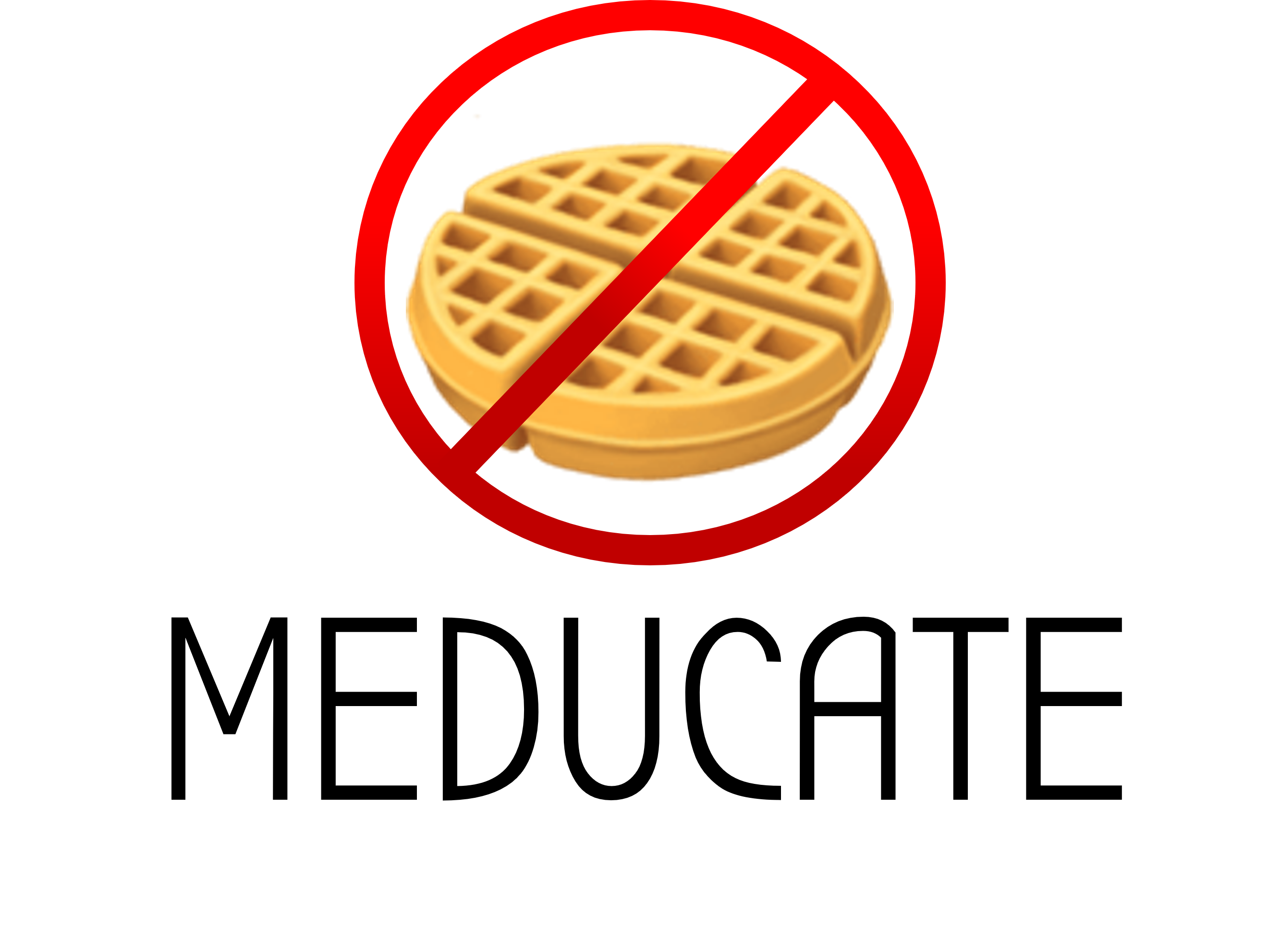 Notes: nsb somatosensory system 1 - transduction & receptors
Notes: nsb somatosensory system 1 - transduction & receptors
Similar resources:
- All
- Lecture Notes
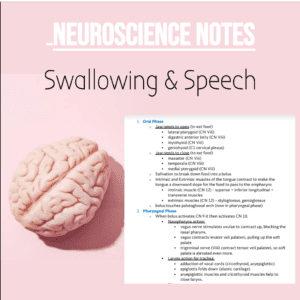
NSB Neuroscience Notes: Swallowing & Speech
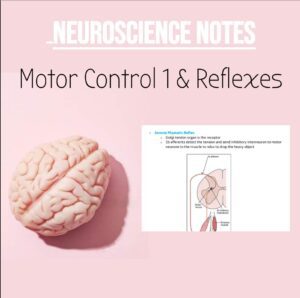
NSB Neuroscience Notes: Motor Control & Reflexes
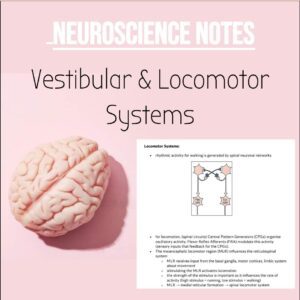
NSB Neuroscience Notes: Vestibular & Locomotor Control
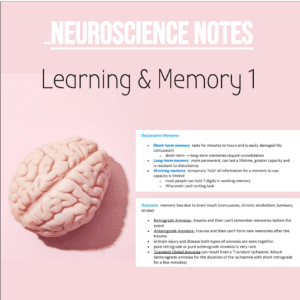
NSB Neuroscience Notes: Learning & Memory
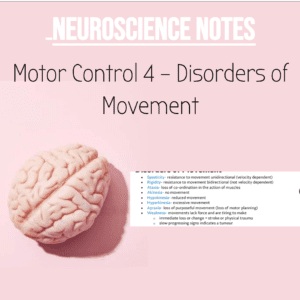
NSB Neuroscience Notes: Disorders of Movement
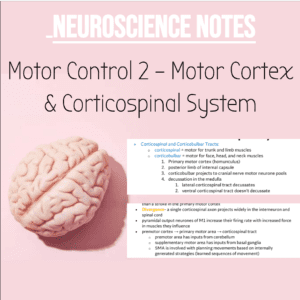
NSB Neuroscience Notes: Motor Control 2
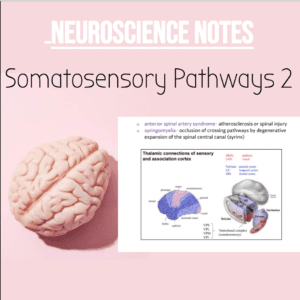
NSB Neuroscience Notes: Somatosensory System 2
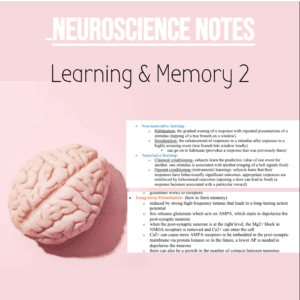
NSB Neuroscience Notes: Learning & Memory 2
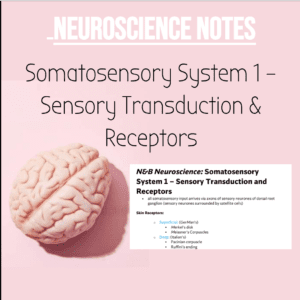
NSB Neuroscience Notes: Pain
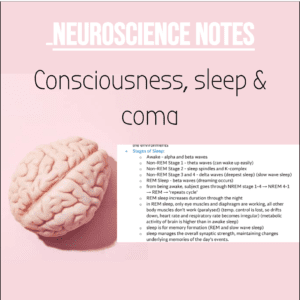
NSB Neuroscience Notes: Consciousness, Sleep and Coma
Y2, Y2Notes, Y2 NSB, Neuro Notes, Neuroscience, Christopher Yeo, Chris Yeo, NSBNeuro ,
N&B Neuroscience: Somatosensory
System 1 – Sensory Transduction and
Receptors
• all somatosensory input arrives via axons of sensory neurones of dorsal root
ganglion (sensory neurones surrounded by satellite cells)
Skin Receptors:
o Superficial: (GerMan’s)
▪ Merkel’s disk
▪ Meissner’s Corpuscles
o Deep: (Italian’s)
▪ Pacinian corpuscle
▪ Ruffini’s ending
Cutaneous Receptor Types:
Sensory Afferent Fibres:
• class 1 = A-alpha
1. Nociceptors: A delta fibres =
fast (first pain sensation)
Nociceptors: C fibres = slow
(second pain sensation)
N&B Neuroscience: Somatosensory
System 1 – Sensory Transduction and
Receptors
Axon Reflex:
• What happens when you get injured-
1. nerve to dorsal root ganglion carrying noxious signal
2. branch of nerve releases substance P
3. substance P acts on mast cells to secrete histamine, which sensitises
receptor ending and promotes inflammation and swelling (positive
feedback loop)
4. substance P relaxes blood vessels to increase blood flow
Temperature (C + A delta fibres)
5. mosaic distribution of hot and cold receptor types.
6. specific heats of objects are an important tactile identifier (metal vs
plastics)
7. paradoxical cold- cold receptors detect heat at extreme levels, acting as
a danger signal
N&B Neuroscience: Somatosensory
System 1 – Sensory Transduction and
Receptors
Mechanoreceptors (A beta + A delta fibres)
• Merkel’s disk- superficial touch receptors (slow adapting) (small receptive
field- fine discriminative touch)
• Meissner’s corpuscle- transmit pressure via change in fluid (rapidly adapting)
(sensitivity to light touch) (small receptive field- detect local protuberances)
• Pacinian corpuscles- rapidly adapting (detect pressure changes and vibrations)
(large receptive fields – high sensitivity)
• Ruffini endings- slowly adapting (detect pressure and vibrations) (large
receptive fields- directional stretch)
Proprioceptors (A alpha, A beta)
• measure muscle length and tension to inform the brain abut stance of the body
and the progress of voluntary movements
• uses muscle spindles (gamma efferent for length)
• uses Golgi tendon organs (1b to measure muscle tension)
